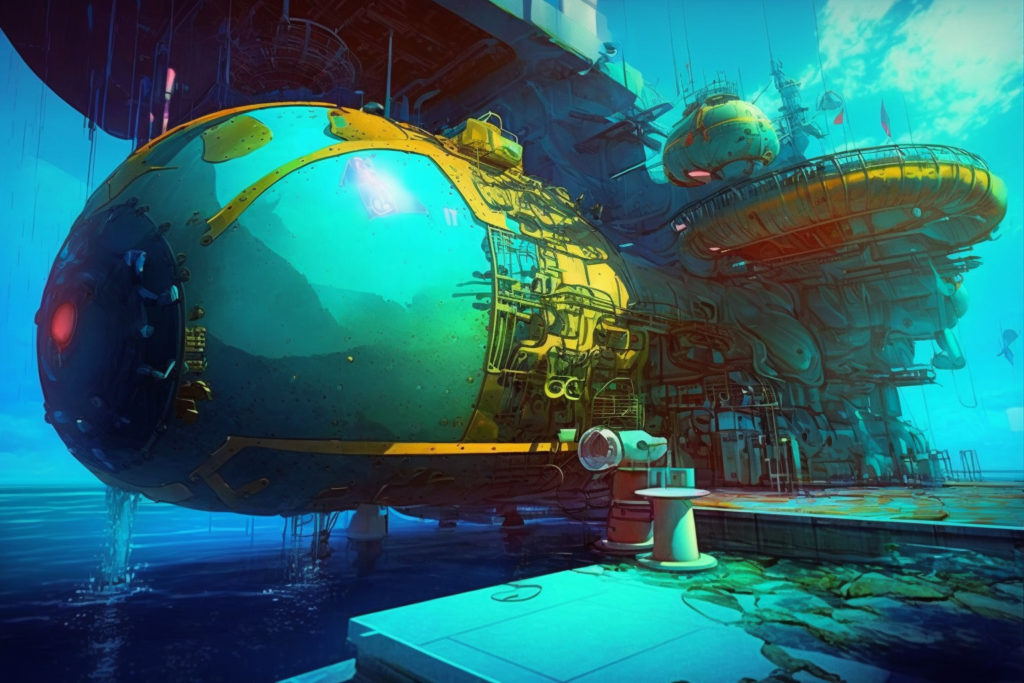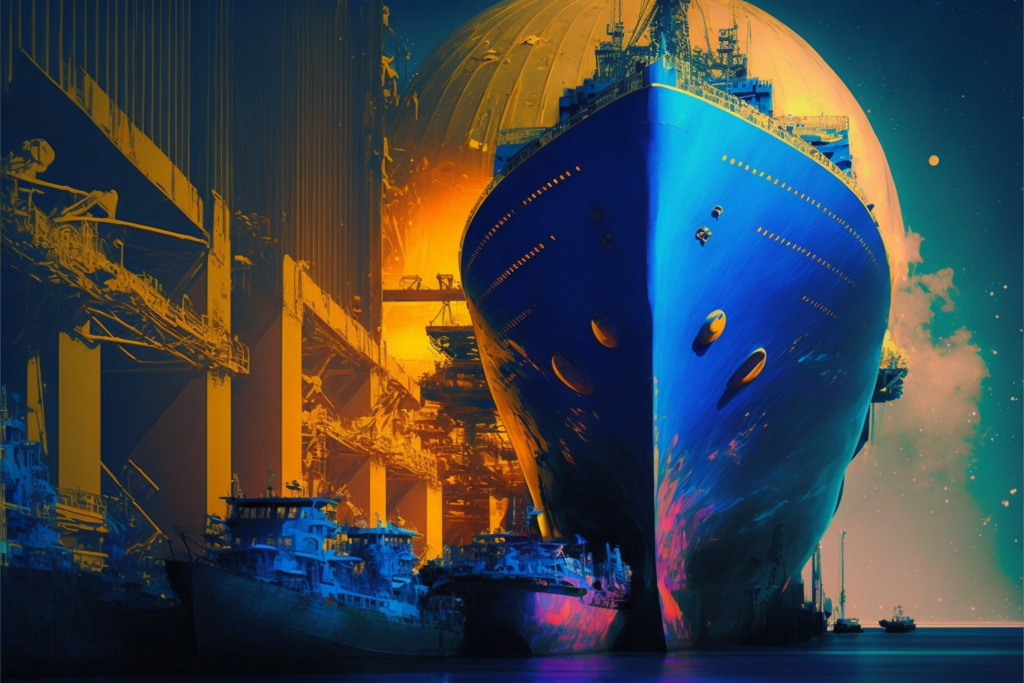I. Introduction
The marine industry is an ever-evolving sector that encompasses a variety of activities, including shipbuilding, offshore oil & gas production, shipping, marine engineering, and more. Marine engineering, the design and development of ships and other vessels, is one of the main components of the marine industry, and is responsible for the design and construction of a variety of vessels, from commercial vessels to navy ships. Marine conservation, which is the protection and management of marine environments, is also an important part of the marine industry.
The marine industry is essential to the global economy, and is heavily impacted by climate change. In recent years, the effects of climate change have become more evident, and the marine industry has had to adapt to the changing environment. Rising sea levels, more frequent and intense storms, and changing ocean currents are all effects of climate change that have had an impact on the marine industry.
In order to adapt to the changing environment and mitigate the effects of climate change, the marine industry has had to innovate. A variety of new technologies have been developed in order to make ships and vessels more efficient and environmentally friendly. In addition, marine conservation efforts have been undertaken in order to protect and manage marine environments. In this article, we will discuss the impact of climate change on the marine industry, the innovations in marine engineering, and the marine conservation efforts that have been undertaken in recent years.
II. The Impact of Climate Change on Marine Industry
The impact of climate change on the marine industry is a critical concern that must be addressed. As the Earth’s climate continues to change and temperatures rise, the effects on marine ecosystems and industries can be severe. From increased sea levels to extreme weather conditions, the impacts of climate change are far-reaching. In order to mitigate these impacts and continue to sustainably utilize the ocean, it is important to have an understanding of the impact of climate change on the marine industry and the innovations in marine engineering and conservation efforts that are being developed in response.
A. Impacted Sectors of Climate Change
Climate change is resulting in increased temperatures, rising sea levels, and more frequent and powerful storms. Sea levels are rising at an unprecedented rate, with the Intergovernmental Panel on Climate Change estimating that sea levels could rise by up to one meter by the end of the century. This will have a profound impact on coastal communities, fisheries, and marine infrastructure. Rising temperatures are resulting in an increase in ocean acidity, which can reduce the abundance of fish and other species. As the ocean temperature rises, it can also lead to the spread of disease and the displacement of species. The increased intensity and frequency of storms can also cause significant damage to marine infrastructure such as docks, fisheries, and other buildings.
B. Direct and Indirect Effects of Climate Change on the Marine Industry
The impacts of climate change on the marine industry can have far-reaching impacts. In addition to the direct effects of climate change on marine ecosystems, there are also indirect impacts that must be considered. For example, rising sea levels can cause coastal erosion, leading to the destruction of marine habitats and the displacement of coastal communities. This can lead to a decrease in the abundance of fish and other species, which can have a direct impact on the fishing industry. In addition, increased ocean temperatures can lead to the spread of disease and the displacement of species, which can decrease the yield of fisheries.
Fortunately, there are a number of innovative technologies and conservation efforts that are being developed to mitigate the impacts of climate change on the marine industry. For example, new advancements in marine engineering are being used to improve the efficiency and sustainability of fisheries. This includes the use of autonomous vessels to reduce the number of vessels needed for a given operation, as well as the development of new fishing gear and techniques to reduce the amount of energy needed to catch fish. In addition, advances in ocean observation technologies are being used to monitor and predict changes in ocean conditions, allowing for more efficient and sustainable management of marine resources.
C. Conservation Effects Related to Climate Change
In addition to technological advancements, there are also a number of marine conservation efforts that are being undertaken to preserve and protect marine ecosystems. The Conservation International is at the forefront of marine conservation, working to protect and restore marine ecosystems around the world. Their efforts include the creation of marine protected areas, the restoration of coral reefs, the reduction of marine pollution, and the creation of sustainable fisheries. Additionally, there are a number of non-governmental organizations that are devoted to preserving ocean life and promoting responsible fishing, such as the Marine Conservation Institute and the International Union for Conservation of Nature.
In conclusion, climate change is having a profound impact on the marine industry, and it is important to understand the implications of these impacts. Fortunately, there are a number of innovative technologies and conservation efforts that are being developed to mitigate the impacts of climate change on the marine industry. These efforts will help to ensure the long-term sustainability of marine ecosystems and the marine industry as a whole.
III. Innovations in Marine Engineering
The marine industry is growing at a rapid pace and is constantly adapting to the changing environment. Innovations in marine engineering technologies have revolutionized the industry, allowing for more efficient and sustainable practices.
A. Overview of Marine Engineering Technologies
Marine engineering technologies are used in a variety of applications, from ocean exploration and deep sea research to coastal defense and port infrastructure. These technologies help to ensure marine sustainability, improve safety regulations, and increase efficiency. Some examples of marine engineering technologies include remotely operated vehicles (ROVs), autonomous underwater vehicles (AUVs), and undersea mapping software.
The marine industry is a fascinating and rapidly evolving field, with numerous emerging technologies and innovations that are transforming the way we approach marine engineering and conservation. With the help of marine robots like OceanOne, scientists are now able to study deep-sea marine life, explore shipwrecks, and even aid in ocean safety and conservation efforts. The Maritime Administration is leading the way in advancing the research and development of these technologies, working in partnership with academic, public, private, and nongovernmental organizations to evaluate and utilize the latest advancements in the field.
B. Examples of Innovative Technologies
ROVs are equipped with cameras and sensors that allow them to collect data and monitor underwater environments. They are used in many industries, including military, oil and gas, and ocean research. AUVs are self-contained, autonomous robots that can be deployed to survey ocean depths, conduct imaging and mapping, and explore hazardous terrain. Undersea mapping software is used by government agencies, research organizations, and commercial operators to locate objects, identify marine life, and track the movement of vessels.

Marine robotics is taking inspiration from the natural engineering of the human body, leading to the creation of human-inspired marine robots. Meanwhile, more and more aquatic robots are emerging that are based on ocean wildlife, such as biomimetic underwater robots. The field of marine robotics is alive with innovation, and 6 emerging trends are driving this growth, including the development of more efficient power systems, advancements in sensing and navigation technologies, and the increasing use of machine learning and artificial intelligence.
In addition to these technologies, the development of renewable energy sources such as wave and tidal power, have revolutionized the marine industry. Wave and tidal power can be harnessed to generate electricity, helping to reduce emissions and boost sustainability.
C. Growth Prospects in the Marine Industry
With these developments, the marine industry is poised for significant growth in the coming years. The increasing demand for innovative solutions to maritime problems and the growing importance of ocean conservation efforts will continue to drive investment and growth in the marine robotics sector. It is our bold prediction that the marine industry will experience explosive growth in the coming years, with new technologies and innovations continuing to revolutionize the field.
To learn more about marine engineering technologies, click here. To learn more about renewable energy sources, click here. To learn about marine conservation efforts, click here.
The marine industry is a rapidly evolving sector, with new technologies and approaches to marine engineering, conservation, and renewable energy sources being developed all the time. By utilizing the latest in marine engineering technologies, the marine industry is better equipped to face the challenges of climate change and other environmental issues. With the right tools and knowledge, the marine industry is well-positioned to make a positive impact on our oceans and the creatures that inhabit them.
IV. Marine Conservation Efforts
The need for marine conservation is becoming increasingly apparent as the effects of climate change become more pronounced. Various conservation efforts have been implemented in recent years to protect and preserve ocean habitats and marine life. This section will provide an overview of marine conservation goals as well as examples of conservation projects taking place around the world.
A. Overview of Marine Conservation Goals
The overarching goal of marine conservation is to protect the health and diversity of the ocean environment and its inhabitants. This includes the prevention of human activities that can have a negative impact on ocean habitats and wildlife, such as overfishing and pollution. Additionally, efforts are being made to preserve and restore marine habitats that have already been damaged by human activity.
B. Examples of Marine Conservation Projects
Marine conservation projects are being conducted around the world to protect and restore the ocean environment. One such project is the establishment of Marine Protected Areas (MPAs), which are designated areas of the ocean where activities such as fishing and mining are restricted or prohibited. These areas are intended to protect fragile ecosystems, habitats, and species, allowing them to recover and flourish. Another example of a marine conservation project is the establishment of artificial reefs, which provide living space and food sources for marine life. Additionally, organizations such as the Marine Conservation Institute are working to create networks of MPAs that can create a more resilient ocean environment.
The Marine Industry plays a crucial role in global economics and the environment. The effects of climate change and the need for conservation efforts have been a major focus in recent years and will continue to be in the future. With the help of innovative technologies, marine engineering has seen major advances, providing better solutions and outcomes for the ever-changing environment. Additionally, progress in marine conservation has been made, with a variety of projects providing support and protection for marine ecosystems and species.
V. Marine Electronics Market Opportunity Analysis
The global marine electronics market is poised for a strong growth in the coming years, driven by innovative technologies such as RFID, GPS, AR, robotics, and Blockchain. The increasing focus on maritime safety and security, as well as the development of integrated solutions to tackle maritime terrorism and piracy, presents a huge opportunity for players operating in this market.
A research report published by Reports and Insights provides an in-depth analysis of the market and offers valuable insights into the industry dynamics. According to the report, the port and critical infrastructure segment is estimated to hold the largest market share in 2021, while the crew security segment is expected to gain traction in the coming years. The research study was based on extensive secondary sources, including journals such as the Journal of International Maritime Safety, Environmental Affairs, and Shipping, and the Journal of Marine Science and Engineering.
Future Assessment of Marine Industry
As the world continues to focus on marine conservation, the demand for advanced marine electronics is only set to increase. This presents a huge opportunity for players operating in this market, as the industry is expected to grow from USD 23.9 billion in 2021 to USD 33.4 billion by 2026. The marine electronics market also presents a great opportunity for marine engineering companies looking to diversify their product portfolio.
The marine electronics market presents a huge growth opportunity for players operating in this industry. With the increasing focus on maritime safety and security, as well as the development of innovative technologies, the market is expected to grow at a steady pace in the coming years. This presents a great opportunity for players operating in the marine industry to diversify their product portfolio and tap into a high-growth market.
VI. Conclusion
As the effects of climate change become increasingly apparent, the Marine Industry will have to respond and make global changes. Innovations in marine engineering and conservation projects will be essential for the future of the Marine Industry. Improved technologies for detection and protection will be necessary to face the challenges of climate change. The need for better monitoring and more efficient solutions to protect the environment will be greater than ever before.
The Marine Industry will continue to experience rapid changes and improvements in the years ahead, and it is important that these changes be taken seriously. Marine engineering and conservation efforts must unite to provide the best solutions for the environment and global economy. Through innovative technologies, better monitoring systems and continued conservation projects, the Marine Industry can remain optimistic for the future.
The Marine Industry has come a long way in recent years, and its future looks brighter than ever. Innovations in marine engineering and conservation projects are essential for the growth and sustainability of the industry. It is our job to ensure that these efforts continue to be successful, so that we can protect our environment and the future of the Marine Industry.
EIA, UNEP-WCMC, Marine Innovations.
More Research Reports
We at Industry Growth Trends have always strived to bring you the latest insights and trends in various industries. If you’re interested in understanding the latest trends and growth prospects in related fields, we encourage you to check out some of our other reports. These reports provide a comprehensive analysis of various industries and can help you stay ahead of the curve.
For example, if you’re interested in understanding the impact of employee retention rate on growth, you can read our report on Human Capital Industry Report: Understanding Employee Retention Rate and its Impact on Growth.
Similarly, if you want to know about the growth forecast in the Asia Pacific region, you can read our report on Rising Economies: Asia Pacific Industry Growth Forecast.
We also have reports on other topics such as sustainable forestry, infrastructure and its impact on the logistics industry, agriculture, and eCommerce growth. You can access these reports at Sustainable Forestry Market Report and Forest Management Guide, Transportation and Beyond: How Infrastructure Impacts the Growth of the Logistics Industry, Agriculture Industry Report: Sustainable and Precision Farming Approaches, and Global E-Commerce Growth Forecast 2023: A Comprehensive Analysis respectively.
We hope these reports provide valuable insights and help you stay ahead of the curve. Happy reading!











